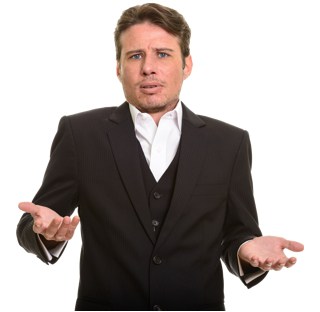Warning! Inventor Help Companies
My Opinion on Invention Help-Type Companies
The opinions expressed here represent my own personal views and not those of my company Binkley Toys Inc.
I’ve received calls for years from clients who have paid for services from invention help-type companies and now they are just trying to find a manufacturer. It frustrates me because the information the inventor is given sounds good, but there are some holes in the logic, and the cost of the invention resource services is very high, in my opinion. Those people are getting ripped off.
My conversation with them will include the details of what they have in their hands which is a generic report and a patent pending file number.
That’s it.
Expensive
The cost ranges from $10,000 to $20,000. I have received the reports they were given and they were all the same. The first page was different because it had a bad sketch of their idea. The rest of the report was just poor information and some of it was factually wrong.
Useless Reports
The reports I received indicated that the toys should comply with the standards set forth by the JPMA (Juvenile Products Manufacturers Association). Being in the toy industry, you’d think I would know all about the JPMA. I don’t. I went to the JPMA website, found contact information and called them. I asked if they certify toys. The response was “No” they do not.
Their website shows that they deal with:

- Bath Seats
- Bath Tubs
- Bassinets & Cradles
- Bedside Sleepers
- Booster Seats
- Bouncers
- Carriages & Strollers
- Changing Tables
- Children’s Folding Chairs
- Frame Infant Carriers
- Full-Size Cribs
- Gates & Enclosures
- Hand Held Infant Carriers
- High Chairs
- Infant Swings
- Play Yards/
Non Full-Size Crib
- Portable Bedrails
- Portable Hook-On Chairs
- Soft Infant Carriers
- Stationary Activity Centers
- Toddler Beds
- Walkers
(
- Bath Seats
- Bath Tubs
- Bassinets & Cradles
- Bedside Sleepers
- Booster Seats
- Bouncers
- Carriages & Strollers
- Changing Tables
- Children’s Folding Chairs
- Frame Infant Carriers
- Full-Size Cribs
- Gates & Enclosures
- Hand Held Infant Carriers
- High Chairs
- Infant Swings
- Play Yards/ Non Full-Size Crib
- Portable Bedrails
- Portable Hook-On Chairs
- Soft Infant Carriers
- Stationary Activity Centers
- Toddler Beds
- Walkers
(list is copyright ©2010 JPMA)

In my opinion, stating that the toys should comply with JPMA standards is not only inaccurate but also could cost you a lot of money and time. Not warning a client that the toys must comply with CPSIA safety standards (USA) or EN71 (Europe) or one of the other standards around the world is negligent and unprofessional. To state that claim means they don’t know much about the toy industry, so how can they charge huge fees to be your expert?
The reports had typos, misspellings, and poor grammar.
The reports stated the ‘markets’ the toy would be suitable for and basically just listed a bunch of sales channels. The sales channels included ‘Infommercials’ (the average cost of an infomercial is $25,000 – $250,000 to produce, not including air time) and almost every other sales channel anyone could think of. For a start-up, it would be extremely expensive to start with some of the suggested sales channels. There was no information offered on the benefits or challenges of each sales channel, just that they should use it. Pretty basic information in my opinion and not worth $6,000 – $18,000.
They listed the ‘target markets’ which was simply another list of every possible age without any indication of which were better, or how to market to those age groups. For a small business to target ‘everyone’ means you are not talking to anyone. Unless you have a budget like Pepsi or McDonald’s you want to be very specific about your target market.
Useless Patent Pending
The Inventor Services push the inventor into getting a ‘patent’. You cannot patent the look of a toy. I have discussed patents with many lawyers and they must be a very specific and unique mechanical function of a toy, or a specific and unique manufacturing method to make the toy (or part of the toy). For example, a toy patent I’ve come across was concerning a very specific physical method concerning how the stuffing hole on the toy was closed. It was very different and unique, and that one part of the toy (the method in which the stuffing hole was closed) was covered under a patent.
Anyone can get a provisional patent, but within twelve months you need to apply and qualify for a full patent which is very expensive (around $20,000) and you can (and most likely will) be denied a patent. I say ‘most likely’ because the reports I saw show a full toy and you can’t patent the look of a full toy. You would need to patent very specific unique parts of the toy that have never been made before.
If you’re not going to spend the 10’s of thousands of dollars for the full patent, and it won’t qualify for one anyway, then why get a provisional patent?
A provisional and full patent is a very good tool for many inventions, but it means nothing for a whole stuffed toy, and the vast majority of my clients would not qualify for a patent, in my opinion.
Questionable Marketing
They claim to ‘market’ your toy idea to potential buyers. For years I received their emails and faxes. I don’t buy people’s ideas. I never have and probably never will. If I’m one of these buyers on their list, it’s definitely not a good one.
The sketches (or virtual prototypes – which are just computer generated images) I’ve seen on the reports were not very attractive. The proportions were off, and they looked very stiff for toys. I was told that it took many months to complete the virtual prototypes which seemed like a long time. I’ve been working with artists and graphics people for over two decades, and if we ever took over a week to get sketches back to a customer, we’d be out of business by now.
I’ve told you what I would not do. So what would I do?


What I would pay?
I feel paying for knowledge and expertise is great. I’ve been paying for my yearly business education through marketing groups and toy associations for many years. It advances me ahead of where I was in the past. If I was going to pay to get help with a toy invention, I would expect to pay for the following:
Artwork – sketches, revisions, color sketch, and then color sketch revisions. $400 – $800 depending on the complexity of the idea. The examples I saw from the inventor resource-type companies were in the $100 or less range.
Provisional Patent – I wouldn’t get one because I wouldn’t qualify for one nor could I afford a full patent. If your product did qualify for a patent, search fees are $120 and about $650 for a full patent. And $125 to $250 for a provisional patent. Lawyer fees to help with the search and details would be above and beyond these fees. You can see all the fees for the US here.
Copyright – Copyright is immediate and free if witnessed by another person. You can also register a copyright with the US Government for $35 here. In Canada, it’s between $50 – $65 and can be done online here for the US and in Canada here. For your country just Google “government copyright office ___country___” for details in your country.
Marketing Help – if someone was truly going to present my idea to serious buyers, the fee would need to be huge. I am fairly certain that if someone had those types of contacts, they wouldn’t be offering those services for less than $100,000 (made through a percentage of the product sales) or more. If it was a service that required a flat fee upfront, I just wouldn’t believe I could afford it, if it truly worked. Furthermore, nobody would believe in my product more than me, so the cheapest way for me to market the toy is to do that work myself. I couldn’t afford to pay someone else to market it properly.
So for all these services that often cost people $6,000 to $18,000, I myself would gladly pay up to $1,500 for a representation (color sketch) of the toy, a copyright filing in the US and Canada and a provisional patent in the USA (if needed).
What you can do about this?
I am sure that there are invention help or invention resource companies out there that provide good value.
1) Please be sure to Google the name of the company you’re looking to work with and type the word “scam”. So Google ”company name scam” or ” company name problems” and see what comes up. There are bound to be some complaints you find but that is the same for any company. You just don’t want to find an overwhelming amount.
2) Check their BBB rating. Search the BBB website and look at their rating and how many complaints they have against them. A company should have an A+ or at least an A rating. You can also see why the complaints were filed. Again, it’s not odd for a company to have one or two complaints (they go away after 36 months normally) but having 14 complaints is very serious, in my opinion.
3) Ask for references. You want to speak to a few past clients and hear their story. I’m not sure how you could tell if they were fake names, or people paid to tell you positive things, but I’m guessing your gut will be able to tell in my opinion.
I hope this page is helpful and prevents more people from getting ripped off.
Thanks.
Rob Bishop

